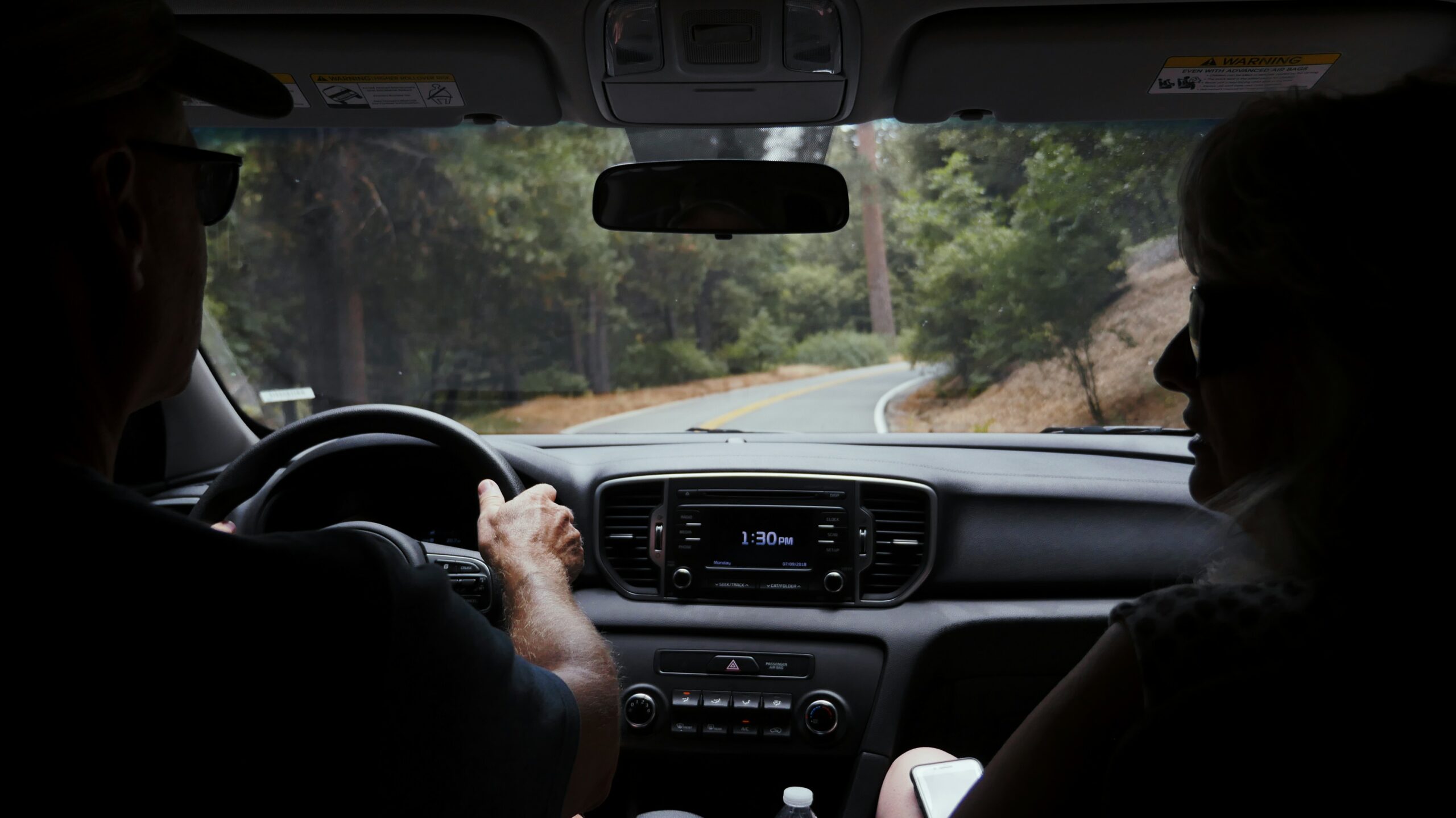A family road trip can be one of the most memorable experiences you share with your loved ones. It offers a unique opportunity to bond, explore new places, and create lasting memories. However, the success of a family road trip largely depends on the preparation. Proper planning can mean the difference between a smooth, enjoyable journey and a stressful, chaotic ordeal. Here’s a comprehensive guide on how to prep for a family road trip.
Steps On How To Prep For A Family Road Trip
Planning the Route
One of the first steps in preparing for a family road trip is planning the route. This involves more than just plotting the fastest way to your destination. Consider scenic routes, points of interest, and places where you can take breaks. Use tools like Google Maps or specialized road trip apps to plan your journey.
When planning the route, take into account the preferences and interests of all family members. If you have young children, you might want to include stops at playgrounds or family-friendly attractions. If there are nature lovers in your group, look for national parks or scenic viewpoints along the way.
Preparing the Vehicle
Your vehicle is the backbone of your road trip. Ensuring it is in top condition is crucial to avoid breakdowns and ensure safety. Start by scheduling a comprehensive vehicle check-up with your mechanic. This should include checking the oil, brakes, tires, battery, and other essential components. Don’t forget to check the air conditioning and heating systems, as comfort is key during long drives.
Stock your car with an emergency kit that includes first aid supplies, a flashlight, blankets, and basic tools. A spare tire, jack, and jumper cables are also essential. Additionally, consider bringing a roadside assistance kit and make sure your insurance is up to date and covers road trips.
Packing Essentials
Packing for a family road trip can be daunting, but with a well-thought-out checklist, it becomes manageable. Start by considering the duration of your trip and the weather conditions. Pack clothes accordingly, ensuring each family member has enough changes of clothing. Don’t forget to include layers, as temperatures can vary throughout the day.
In addition to clothing, pack personal hygiene items, medications, and any special items required by family members, such as glasses or contact lenses. A well-stocked toiletry bag should include toothpaste, toothbrushes, soap, shampoo, and other essentials.
Entertainment and Comfort
Keeping everyone entertained and comfortable during the journey is key to a successful road trip. For children, bring a variety of activities such as coloring books, toys, and electronic devices loaded with movies or games. Audiobooks and podcasts can be enjoyed by the whole family and can make the time pass quickly.
Comfort is also crucial. Pack pillows, blankets, and comfortable seating arrangements to ensure everyone can relax. Snacks and drinks are essential; opt for healthy options to avoid sugar highs and crashes. A small cooler can keep drinks and perishable items fresh.
Navigating Meals and Snacks
Planning meals and snacks is an important aspect of road trip preparation. While it’s fun to stop at local diners and restaurants along the way, having a stash of snacks can save time and money. Pack a variety of snacks, such as fruits, nuts, granola bars, and sandwiches. Avoid foods that can be messy or require refrigeration.
Consider planning a few picnic stops along your route. This allows you to stretch your legs and enjoy a meal in a scenic spot. Research rest areas and parks ahead of time to find suitable locations.
Safety and Emergency Preparedness
Safety should be a top priority on a family road trip. In addition to ensuring your vehicle is in good condition, familiarize yourself with the route and potential hazards. Keep a list of emergency contacts and know the locations of hospitals and police stations along your route.
An emergency kit is essential. Include items such as a first aid kit, flashlights, batteries, a multi-tool, and a portable phone charger. A roadside assistance plan can provide peace of mind in case of a breakdown or other issues.
Accommodation Arrangements
Where you stay during your road trip can greatly impact the overall experience. Whether you prefer hotels, motels, or camping, book your accommodations in advance, especially during peak travel seasons. Research family-friendly options that offer amenities such as pools, playgrounds, and complimentary breakfasts.
If you’re camping, ensure you have all the necessary gear, including tents, sleeping bags, and cooking equipment. Make reservations at campgrounds and familiarize yourself with the rules and facilities available.
Communication and Connectivity
Staying connected during a road trip is important for both safety and convenience. Ensure all family members have charged phones and portable chargers. Invest in a car charger to keep devices powered throughout the journey.
Consider purchasing a mobile Wi-Fi hotspot if you’ll be traveling through areas with limited cell service. This can keep everyone connected and entertained, especially during long stretches of driving.
Managing Expectations and Flexibility
A successful road trip requires managing expectations and remaining flexible. Things won’t always go as planned, and that’s okay. Embrace the unexpected and view it as part of the adventure. Allow extra time for stops and detours, and be prepared to adjust your plans as needed.
Involve all family members in the planning process. This ensures everyone feels included and helps manage expectations. Discuss potential challenges and agree on solutions together.
Environmental Considerations
Being mindful of the environment during your road trip is important. Opt for reusable water bottles, utensils, and containers to reduce waste. Dispose of trash responsibly and recycle when possible.
Consider eco-friendly accommodations and activities. Many hotels and campgrounds offer green options that reduce your environmental impact.
FAQs on how to prep for a family road trip
How do I keep my kids entertained during a long drive?
Keeping kids entertained during a long drive can be challenging, but with some planning, it’s manageable. Bring a variety of activities to keep them occupied, such as coloring books, toys, and electronic devices loaded with movies or games. Audiobooks and podcasts are great options for the whole family. Plan regular breaks to let kids stretch their legs and burn off energy. Consider packing a surprise bag with small toys or treats that can be distributed throughout the trip to keep things exciting.
What should I pack in my emergency kit?
An emergency kit is essential for any road trip. It should include first aid supplies such as bandages, antiseptic wipes, pain relievers, and any necessary medications. A flashlight with extra batteries, blankets, a multi-tool, and a portable phone charger are also important. Additionally, include items such as a spare tire, jack, jumper cables, and a roadside assistance plan. Make sure your kit is easily accessible in case of an emergency.
How do I plan meals and snacks for a road trip?
Planning meals and snacks for a road trip involves a mix of convenience and nutrition. Pack a variety of snacks that are easy to eat on the go, such as fruits, nuts, granola bars, and sandwiches. Avoid foods that can be messy or require refrigeration. Plan a few picnic stops along your route to enjoy meals in scenic spots. Research rest areas and parks ahead of time to find suitable locations. If you plan to dine at local restaurants, look up options in advance to avoid delays.
What are some tips for staying comfortable during long drives?
Staying comfortable during long drives is crucial for a pleasant road trip. Ensure everyone has comfortable seating arrangements with pillows and blankets. Dress in layers to accommodate temperature changes. Take regular breaks to stretch your legs and move around. Keep the car well-ventilated and consider using seat cushions for added comfort. Snacks and drinks are essential to keep everyone refreshed. Adjust your seat position periodically to prevent stiffness.
How do I find family-friendly accommodations?
Finding family-friendly accommodations requires some research. Look for hotels, motels, or campgrounds that offer amenities such as pools, playgrounds, and complimentary breakfasts. Read reviews from other families to get an idea of what to expect. Booking in advance is recommended, especially during peak travel seasons. If you’re camping, ensure you have all the necessary gear and make reservations at campgrounds that cater to families.
How can I ensure safety during a road trip?
Ensuring safety during a road trip involves several steps. Start by getting your vehicle checked by a mechanic to ensure it’s in top condition. Familiarize yourself with the route and potential hazards. Keep a list of emergency contacts and know the locations of hospitals and police stations along your route. An emergency kit is essential and should include first aid supplies, a flashlight, blankets, a multi-tool, and a portable phone charger. A roadside assistance plan can provide peace of mind in case of a breakdown or other issues.
How do I stay connected during a road trip?
Staying connected during a road trip is important for both safety and convenience. Ensure all family members have charged phones and portable chargers. Invest in a car charger to keep devices powered throughout the journey. Consider purchasing a mobile Wi-Fi hotspot if you’ll be traveling through areas with limited cell service. This can keep everyone connected and entertained, especially during long stretches of driving.
What are some eco-friendly tips for a road trip?
Being mindful of the environment during your road trip is important. Opt for reusable water bottles, utensils, and containers to reduce waste. Dispose of trash responsibly and recycle when possible. Consider eco-friendly accommodations and activities. Many hotels and campgrounds offer green options that reduce your environmental impact. Plan your route to minimize driving distances and reduce fuel consumption.
How do I manage expectations and stay flexible?
Managing expectations and remaining flexible is key to a successful road trip. Things won’t always go as planned, and that’s okay. Embrace the unexpected and view it as part of the adventure. Allow extra time for stops and detours, and be prepared to adjust your plans as needed. Involve all family members in the planning process. This ensures everyone feels included and helps manage expectations. Discuss potential challenges and agree on solutions together.
How do I choose the best route for a road trip?
Choosing the best route for a road trip involves considering several factors. In addition to the fastest route, look for scenic routes and points of interest along the way. Use tools like Google Maps or specialized road trip apps to plan your journey. Take into account the preferences and interests of all family members. If you have young children, you might want to include stops at playgrounds or family-friendly attractions. If there are nature lovers in your group, look for national parks or scenic viewpoints.
How can I make the most of rest stops?
Rest stops are an important part of a road trip, allowing you to stretch your legs, use the restroom, and refresh. Plan your rest stops ahead of time to make the most of them. Look for locations that offer scenic views, playgrounds, or picnic areas. Take the opportunity to enjoy a snack or meal, and let everyone move around to prevent stiffness. Rest stops can also be a chance to explore local attractions or take a short hike.
How do I keep my vehicle organized during a road trip?
Keeping your vehicle organized during a road trip is essential for comfort and efficiency. Use storage solutions such as bins, bags, and organizers to keep items in their place. Designate specific areas for snacks, entertainment, and personal items. Keep essential items within easy reach, such as water bottles, maps, and charging cables. Regularly clean up any trash or clutter to maintain a tidy space.
What should I do if I encounter car trouble?
Encountering car trouble during a road trip can be stressful, but being prepared can help. If you experience a breakdown, pull over to a safe location and turn on your hazard lights. Use your roadside assistance plan to get help, and if necessary, call emergency services. Having a well-stocked emergency kit can provide basic tools and supplies to address minor issues. Familiarize yourself with basic car maintenance tasks, such as changing a tire or jump-starting a battery.
How do I handle long stretches of driving?
Handling long stretches of driving requires careful planning and consideration of everyone’s needs. Take regular breaks to stretch your legs and move around. Share the driving responsibilities if possible, allowing each driver to rest. Keep the car well-ventilated and maintain a comfortable temperature. Use entertainment options such as music, audiobooks, or podcasts to pass the time. Plan engaging activities for passengers to keep them occupied and prevent boredom.
How do I ensure everyone enjoys the trip?
Ensuring everyone enjoys the trip involves considering the preferences and interests of all family members. Involve everyone in the planning process, allowing each person to choose activities or destinations. Plan a variety of stops that cater to different interests, such as historical sites, nature parks, or amusement parks. Maintain a positive attitude and embrace the adventure, even when things don’t go as planned. Encourage open communication and flexibility to address any concerns or challenges.
How do I prepare for different weather conditions?
Preparing for different weather conditions involves packing appropriate clothing and gear. Check the weather forecast for your route and destination, and pack accordingly. Bring layers to accommodate temperature changes, and include items such as raincoats, hats, and sunglasses. Keep an emergency blanket and extra clothing in your vehicle in case of unexpected weather. Plan your route to avoid areas prone to extreme weather, such as heavy snow or flooding.
How do I keep track of important documents?
Keeping track of important documents is crucial for a smooth road trip. Create a designated folder or pouch for documents such as driver’s licenses, vehicle registration, insurance papers, and emergency contact information. Make copies of important documents and store them in a separate location, such as a bag or glove compartment. Consider using digital copies of documents stored on your phone or a secure cloud service. Regularly check that all documents are up to date and easily accessible.
How do I plan activities for different age groups?
Planning activities for different age groups involves considering the interests and needs of all family members. For young children, look for family-friendly attractions such as zoos, playgrounds, and interactive museums. Teenagers might enjoy adventure activities such as hiking, kayaking, or amusement parks. Adults can appreciate cultural sites, scenic drives, and local cuisine. Plan a mix of activities that cater to different interests, and involve everyone in the decision-making process.
How do I stay on budget during a road trip?
Staying on budget during a road trip involves careful planning and mindful spending. Start by creating a budget that includes expenses such as gas, accommodations, meals, and activities. Look for deals and discounts on accommodations and attractions. Pack snacks and drinks to reduce spending on food. Plan picnic stops instead of dining out for every meal. Keep track of your spending throughout the trip to stay within your budget.
How do I handle unexpected situations?
Handling unexpected situations during a road trip requires flexibility and a positive attitude. Accept that things won’t always go as planned, and view challenges as part of the adventure. Keep a list of backup plans for accommodations, activities, and routes. Stay calm and communicate openly with your family to address any concerns or issues. Use your emergency kit and roadside assistance plan to handle any car trouble or emergencies.
How do I make the most of scenic routes?
Making the most of scenic routes involves planning and taking time to enjoy the journey. Research scenic routes and points of interest along your way. Plan stops at viewpoints, nature trails, and local attractions. Take your time and avoid rushing from one destination to another. Embrace the opportunity to explore and appreciate the beauty of your surroundings. Capture memories with photos and take breaks to fully experience the scenic spots.
How do I prepare for different time zones?
Preparing for different time zones involves adjusting your schedule and expectations. Plan your route to allow time for rest and adjustment to new time zones. Keep track of time changes and plan your activities accordingly. Communicate with your family about any changes in schedule or routine. Be mindful of meal times and sleep patterns to minimize the impact of time changes. Allow time for rest and relaxation to avoid fatigue.
How do I stay healthy during a road trip?
Staying healthy during a road trip involves making mindful choices about food, exercise, and rest. Pack healthy snacks such as fruits, nuts, and granola bars. Stay hydrated by drinking plenty of water. Take regular breaks to stretch your legs and move around. Plan physical activities such as hikes, walks, or sports to keep everyone active. Prioritize rest and ensure everyone gets enough sleep. Avoid excessive junk food and opt for balanced meals when dining out.
How do I handle road trip fatigue?
Handling road trip fatigue requires regular breaks and mindful driving habits. Take breaks every couple of hours to stretch your legs, use the restroom, and refresh. Share the driving responsibilities to allow each driver to rest. Maintain a comfortable temperature and keep the car well-ventilated. Stay hydrated and avoid heavy meals that can cause drowsiness. Use entertainment options such as music, audiobooks, or podcasts to stay engaged.
How do I plan for pet-friendly road trips?
Planning for pet-friendly road trips involves considering the needs of your furry companions. Research pet-friendly accommodations and attractions along your route. Pack essentials such as food, water, bowls, leashes, and waste bags. Ensure your pet is comfortable during the journey with a cozy bed or blanket. Take regular breaks to allow your pet to stretch their legs and use the restroom. Never leave your pet unattended in a hot car. Familiarize yourself with pet travel regulations and ensure your pet’s vaccinations are up to date.
How do I create a road trip itinerary?
Creating a road trip itinerary involves planning your route, stops, and activities. Start by outlining your route and identifying key destinations. Research points of interest, scenic spots, and family-friendly attractions along the way. Plan your accommodations and book them in advance. Allocate time for driving, breaks, and activities. Be flexible and allow for spontaneous stops or detours. Share your itinerary with all family members and involve them in the planning process.
How do I ensure everyone stays happy and engaged?
Ensuring everyone stays happy and engaged involves considering the preferences and interests of all family members. Involve everyone in the planning process and allow each person to choose activities or destinations. Plan a variety of stops that cater to different interests. Maintain a positive attitude and embrace the adventure, even when things don’t go as planned. Encourage open communication and flexibility to address any concerns or challenges. Create opportunities for bonding and quality time together.
How do I document and capture memories?
Documenting and capturing memories is an important part of a road trip. Bring a camera or use your phone to take photos and videos of your journey. Create a travel journal or scrapbook to document your experiences. Encourage family members to contribute by drawing, writing, or adding mementos. Use social media to share updates and memories with friends and family. Take time to reflect on your trip and appreciate the memories you’ve created.
How do I unwind and relax after a long drive?
Unwinding and relaxing after a long drive involves creating a comfortable and calming environment. Choose accommodations that offer relaxation amenities such as pools, hot tubs, or comfortable seating areas. Plan activities that allow for rest and rejuvenation, such as nature walks, spa visits, or quiet time. Take time to stretch, practice deep breathing, and enjoy a good meal. Encourage family members to unwind in their own way, whether it’s reading, listening to music, or simply resting.
How do I make the trip educational?
Making the trip educational involves incorporating learning opportunities into your journey. Visit historical sites, museums, and cultural attractions to learn about the local history and culture. Plan nature walks or hikes to explore the natural environment and wildlife. Encourage family members to research and share interesting facts about your destinations. Use travel time to listen to educational audiobooks or podcasts. Create interactive activities such as scavenger hunts or quizzes to make learning fun.
How do I involve everyone in the planning process?
Involving everyone in the planning process ensures that all family members feel included and engaged. Hold family meetings to discuss the trip and gather input on destinations, activities, and preferences. Assign tasks to each family member, such as researching accommodations, planning meals, or creating an itinerary. Use online tools and resources to gather ideas and inspiration. Encourage open communication and be flexible in accommodating different interests and needs. Celebrate the planning process as part of the overall adventure.
How do I ensure a positive attitude throughout the trip?
Ensuring a positive attitude throughout the trip involves maintaining a flexible and open mindset. Embrace the adventure and view challenges as part of the experience. Encourage positive communication and support among family members. Focus on the highlights and memorable moments of the trip. Create opportunities for bonding and quality time together. Practice gratitude and appreciate the opportunity to explore and spend time with your loved ones.
The bottom line on how to prep for a family road trip
A family road trip, with all its intricate planning and unforeseen adventures, is a journey that can foster deeper bonds and create lifelong memories. By preparing thoroughly—considering routes, vehicle readiness, packing essentials, entertainment, meals, and safety—you set the stage for an enjoyable and stress-free experience. Embrace flexibility, maintain a positive attitude, and involve everyone in the process to ensure the trip is enjoyable for all. With thoughtful preparation and an open mind, your family road trip will be a memorable adventure filled with laughter, learning, and togetherness.



